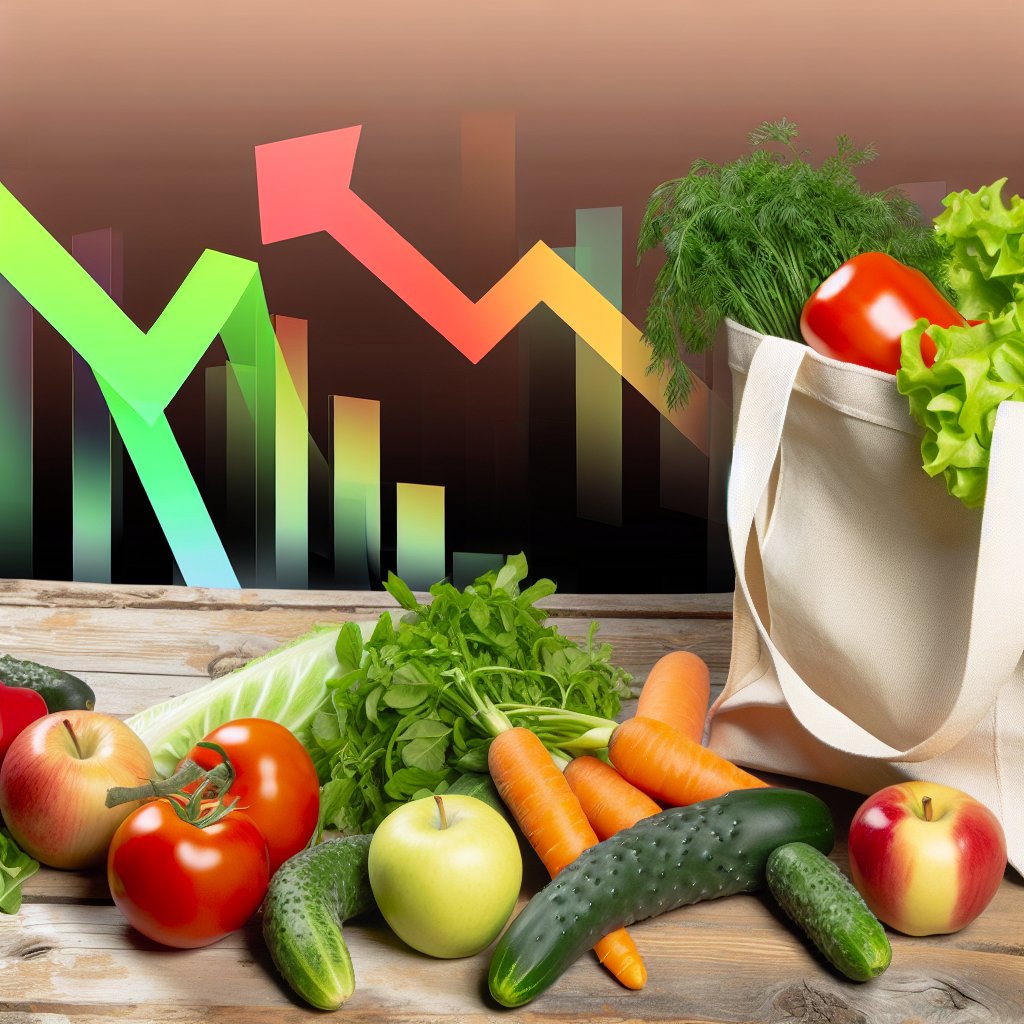10 Cool Ways to Cut Your Grocery Bill While Eating Sustainably
Introduction
Hello, money-savers and nature lovers! Welcome to “Frugal Living,” where you can save money and help the earth at the same time. Today, we’re talking about high grocery prices and how they affect the environment. Balancing your budget while eating in a way that’s good for the planet might seem hard, but don’t worry—I’m here to help! So, grab your shopping bags, and let’s explore some creative ways to save on groceries while eating sustainably.
Understanding Sustainable Eating
Before we start saving, let’s talk about what sustainable eating means. It’s about eating in a way that is kind to our planet, supports fair trade, and is good for our health. Eating sustainably helps reduce your carbon footprint, supports biodiversity, and gives you nutrient-rich foods.
And the great news—sustainable eating can be affordable! You just need to use what you have wisely and make mindful choices at each meal.
The Importance of Meal Planning
Meal planning helps you avoid buying things you don’t need. By planning your meals, you’re less likely to spend extra money on snacks or produce that might go bad. Here are some tips to help:
- Start with Inventory: Check your cupboards and fridge to see what you already have and use it first.
- Batch Cook: Make meals that you can freeze and eat throughout the week.
- Themed Days: Enjoy Taco Tuesdays or Stir-Fry Saturdays to make meal planning fun and easy.
A good meal plan helps you waste less, save money, and enjoy delicious, sustainable meals.
Buying in Bulk
Buying in bulk is a great way to save money and reduce waste. Here are some things you can buy in bulk:
- Grains: Oats, rice, and quinoa
- Legumes: Lentils, black beans, and chickpeas
- Nuts and Seeds: Almonds, sunflower seeds, and flaxseed
Keep these items fresh by storing them in airtight containers in a cool, dark, and dry place.
Embrace Seasonal and Local Produce
Eating seasonal and local produce is good for the environment, often tastes better, and usually costs less. Here’s how:
- Farmers Markets: Find fresh, cheap produce and support local farmers.
- Preserve the Bounty: Freeze berries or can tomatoes for use in colder months.
Grow Your Own Food
Growing your own food is rewarding and cost-effective. Here are some easy things to start with:
- Herbs: Mint, basil, and chives
- Salad Greens: Lettuce and spinach
- Tomatoes: They grow well with sun and water
Even small spaces can be turned into gardens with a bit of creativity.
Reducing Food Waste
Reducing food waste is important for saving money and the planet. Try these ideas:
- Composting: Turn scraps into compost for your garden.
- Leftover Makeovers: Use leftovers in new recipes.
- Tech Solutions: Apps like “Too Good To Go” help reduce food waste by offering discounts on food that might otherwise be thrown away.
Exploring Plant-based Meals
Plant-based meals are often cheaper than meat-based ones and are also eco-friendly. Here are some ideas:
- Lentil Soup: A simple, filling meal.
- Chickpea Tacos: Flavorful and nutritious.
- Vegan Chili: Full of beans, veggies, and savings.
Join online communities to find more plant-based recipes that are good for your wallet and the planet.
Utilize Technology for Savings
Use technology to make saving money easier:
- Cash-Back Apps: “Ibotta” and “Rakuten” offer rewards and discounts.
- Digital Coupons: Find savings on organic and sustainable brands online.
- Meal Kit Services: Use promo codes for discounts on eco-friendly meal kits.
Technology can help keep your sustainable eating on budget.
DIY Kitchen Staples
Making your own kitchen staples is fun and sustainable:
- Bread: Enjoy the smell of fresh bread baking.
- Plant-based Milk: Homemade almond milk is cost-effective and eco-friendly.
- Sauces and Condiments: Make your own tomato sauce, hummus, or dressing.
Try these DIY projects for savings and satisfaction.
Join a Community or Food Co-op
Join a local CSA (Community Supported Agriculture) program or food co-op for fresh produce:
- Fresh Finds: Co-op members often get produce at lower prices.
- Support Local Farmers: Help local economies and reduce carbon emissions.
- Shared Experience: Connect with others who are also interested in sustainable living.
Food co-ops offer fresh produce and a chance to support sustainability.
Conclusion
That’s it, smart savers! We’ve talked about many ways to cut grocery bills while eating sustainably. Here’s a quick recap:
- Plan meals to reduce waste.
- Buy in bulk to save money and reduce packaging.
- Eat seasonal and local produce for flavor and environmental benefits.
- Grow your own food for cost savings and enjoyment.
- Reduce food waste to save money and the planet.
- Enjoy plant-based meals for economical and eco-friendly eating.
- Use technology to find savings.
- Make DIY kitchen staples for extra savings.
- Join a community or food co-op for fresh, sustainable produce.
Start with one or two ideas and watch your savings grow while helping the earth. Every little change helps, making our planet healthier and your bank account happier. Let’s save the planet—one meal at a time!
